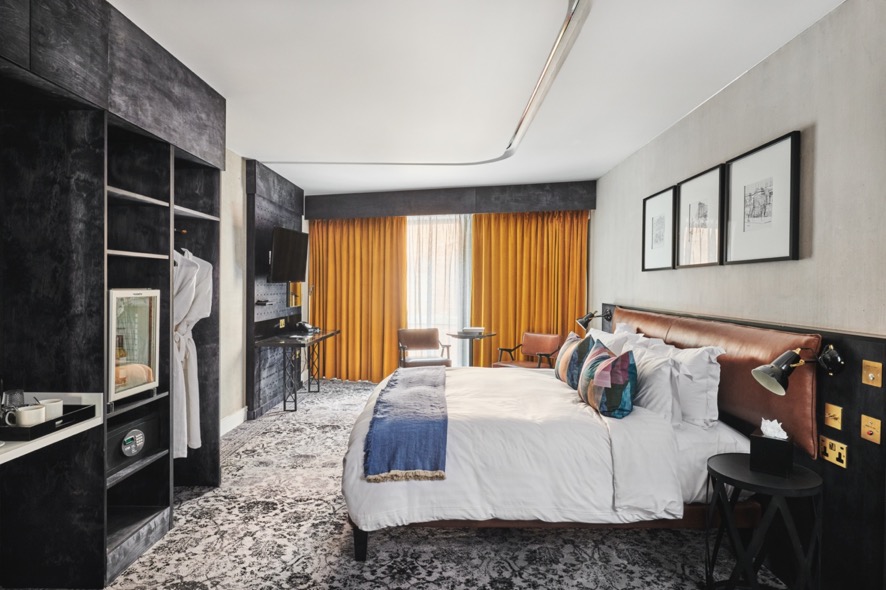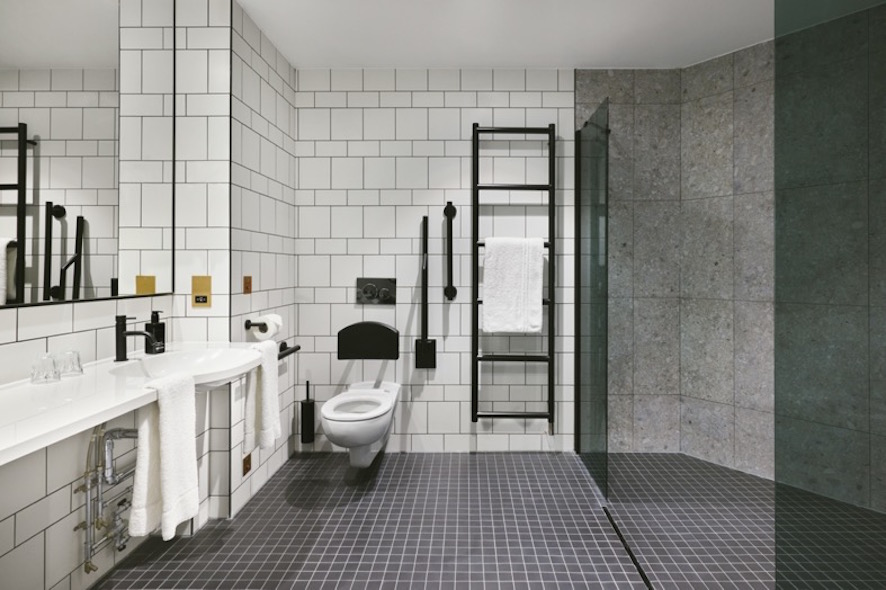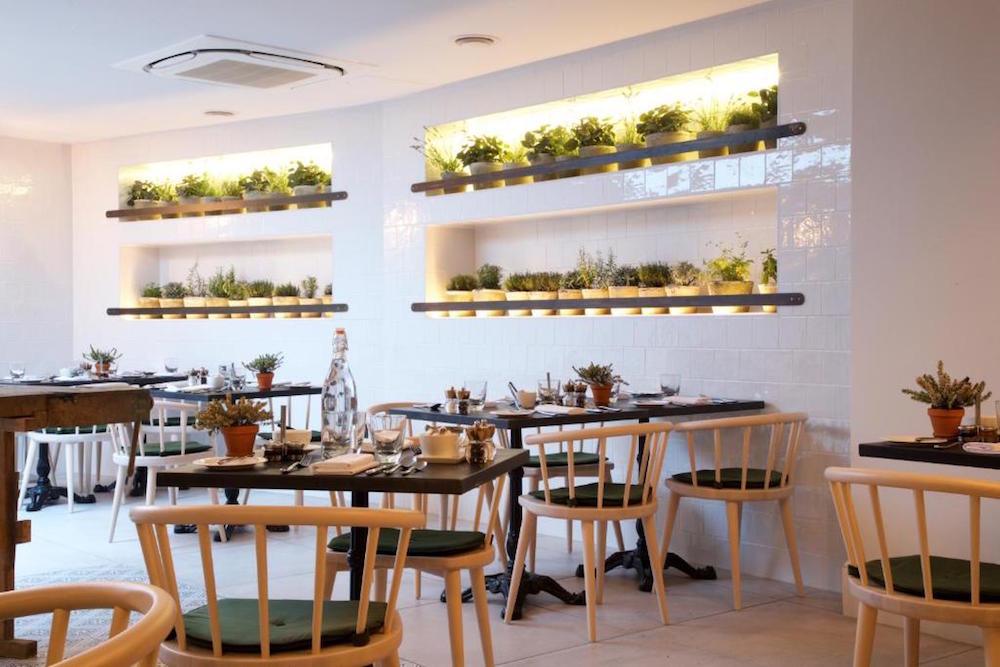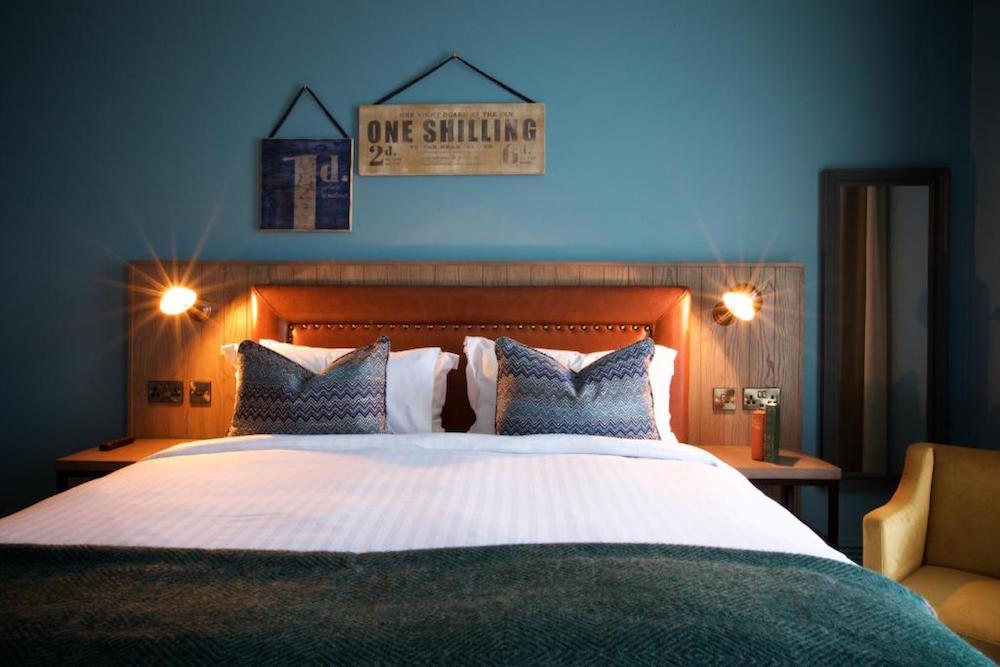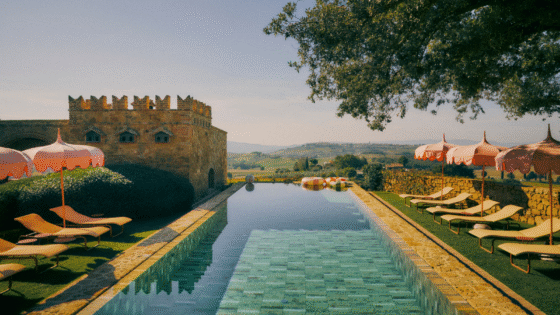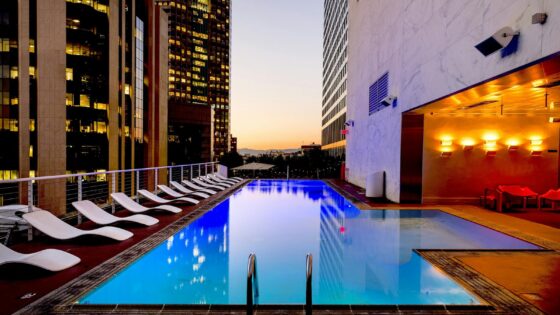In 2021, it is shocking that new design-led hotels are emerging in the global hospitality arena without the same level of consideration when it comes to the design of accessible, disabled-access guestrooms and spaces. In a purposeful interview with Ed Warner, the Founder and CEO of Motionspot, editor Hamish Kilburn only hopes to raise awareness for stylish accessible design…
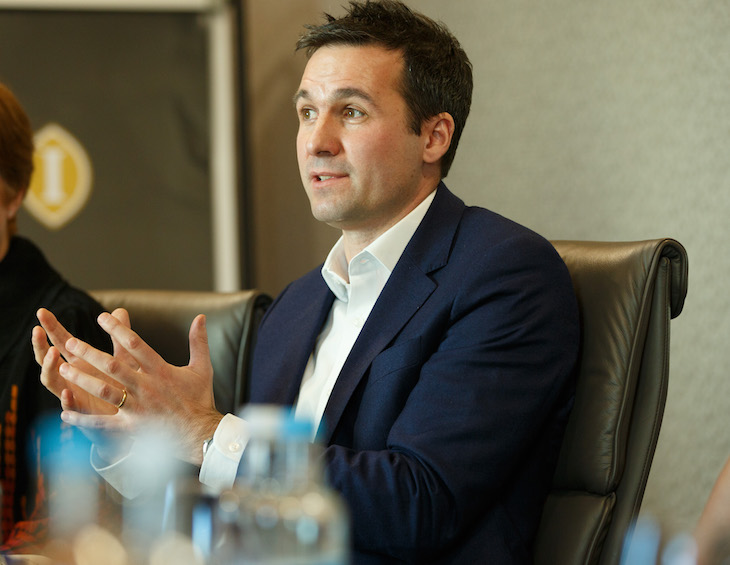
You may or may not know this, but before I was the editor of Hotel Designs, I was part of the British Paralympic Sailing Team, working proudly between the years of 2009 – 2016 as a shore and tuning crew member for the wonderful Hannah Stodel, Stephen Thomas and John Robertson – AKA, the performance team.
Looking back, it was an incredible experience for a 16-year-old who was driven by adventure – not much has changed really. There were so many moments that pivoted me into the lane that I am now in. For example, when I let slip that I wanted to be a journalist on a ferry from Harwich to Hook they helped me launch my first blog and called upon peers to help organise interviews with Paralympic legends in order to create a solid portfolio when it came to progressing further, which ultimately secured my place at university to study my passion and make it a career. I received a dreadful phone call once at the small hours in the morning, during a Paralympic qualifying event in Weymouth, about my beautiful cousin who tragically lost her life in a car accident. I was sharing a room with another athlete, Paralympic gold medallist Helena Lucas who was competing in the morning. Without any objection, she woke up and sat with me through the night. I felt terrible, and even worse knowing that Lucas could have really used those extra hours resting for her final race in the series. It’s not often as shore crew at an event you are the centre of attention. In short, though, that painful moment was when I realised that I was part of more than just a team; I was part of a family.
And strangely, when I tell people about my experience working with this perfectly able – no, formidable – team, I get asked how it was possible to train with the Paralympic team without myself being disabled. I’m not judging the ignorance, because transparency is best for us to progress, but it is surprising to me how segregated in society people who have disabilities can become. During my years sailing with the squad, I witnessed very capable athletes who happen to have disabilities being treated extremely differently. I noticed, among other things, hotel facilities not being adequate, and the views, at best, from the windows from the ‘disabled rooms’ would stretch out onto the concrete car park.
Five years after the team were forced to retire as sailing was, to much protest, taken out of the Paralympic programme for Tokyo 2020, my blood boiled recently when I noticed that the Team GB Instagram account, which has more than 491, 000 followers was not being used to promote the Paralympic Team GB athletes. Instead, the team were being amplified on the Paralympics GB account, which has just 46, 500 followers (more than 400,000 less than the Olympic Team GB account). Call me a modernist, but to really promote diversity and equality, isn’t Team GB just Team GB? What is the need for a second social media account if the aim is not to drive a wedge between the two events?
I digress, however these anecdotes can very seamlessly be linked to the design and hospitality industry’s attitudes towards creating spaces that are accessible for all – practically as well as stylishly. Until recently, I think it’s fair to say that designing such spaces was seen through very limited lenses. Instead of enhancing a design scheme, hotels wrongly ticked a box in order to offer disabled-access rooms that were usually on the ground floor of the hotel without even a hint of design consistency and – in some extreme cases – only ‘accessible’ via the back-0f-house areas of the building – classy.
Cue setting up my next interview, which is with a true pioneer and visionary (not terms I use lightly). Ed Warner, the Founder and CEO of design solutions studio Motionspot. In 2020, Warner and his team were an integral element in the design and completion of The Brooklyn in Manchester, which became the only UK luxury property that was truly accessible for all and has been named the most accessible hotel in Europe. The hotel’s unique design is leading the Gold Standard in accessible design, with 18 of the 189 rooms fully accessible offering both wheelchair access and ambulant accessibility and the first hotel in Manchester to offer ceiling track hoists for guests.
Since then, Warner and his team worked on the recently opened The Londoner to design accessible and stylish guestrooms and he was recognised in 2020 as one of the leading British interior designer when he was profiled in The Brit List 2020. What’s more, Warner has been shortlisted for the second-year running for Interior Designer of the Year at The Brit List Awards 2021 for his continued efforts to promote better design for everyone.
Hamish Kilburn: Ed, it is a pleasure to see you again! Can you start with explaining to us what ‘accessible design’ is and why is it so important for the future of hotel design and hospitality?
Ed Warner: Accessible design is about creating meaningful spaces that everyone can use, removing the barriers that create undue effort, stress and separation of people. Accessible design is more than a tick box exercise to comply with local regulations. Truly inclusive buildings are only built by considering the needs of all guests and staff with physical, cognitive and sensory impairments, including design for neurodiversity.
“There are more than 14 million disabled people in the UK spending over £15.3bn on UK trips a year. Hoteliers who can make the right adaptations to their hotels will benefit.” – Ed Warner, CEO, Motionspot.
There is a misconception it is just about wheelchair accessibility. Disability is diverse. Just eight per cent of disabled people use a wheelchair. We help people to think about what they are doing for wheelchair users and the other 92 per cent with many other types of physical, sensory and cognitive access needs too.
Why is this important for the future of UK hospitality? It is a massive market! There are more than 14 million disabled people in the UK spending over £15.3bn on UK trips a year. Hoteliers who can make the right adaptations to their hotels will benefit from a significant boost in revenues and proven increases in RevPar and loyalty.
HK: Why isn’t stylish accessible design on designer and clients’ radars?
EW: For many designers and clients, designing for access has traditionally been an exercise in covering ramps and wheelchair toilets. Some designers and operators have neglected it because they mistakenly believe these rooms are not required (wrong, as 10 per cent of all new build rooms should be accessible). Previously the design options have not been aesthetically pleasing, so some designers have opted against making hotels more accessible.

Image credit: The Londoner/Edwardian Hotels London
In addition, many designers have steered away from the subject for a fear of getting it wrong. There is a misconception that access is complicated, but with the right advice at the right time it doesn’t need to be.
Motionspot can help designers to turn high-level building regulations into practical guidance on layouts and finishes on the ground. We work constructively with the design team to achieve a beautiful balance between access and aesthetics so the accessible rooms blend perfectly with the design intent.
As more great examples of accessible design become more prominent my belief is this will start to change.
HK: Why is it so important for you to amplify this message?
EW: We believe accessible rooms and hotel spaces should be inclusive for all guests and we feel it is important to prove to clients the social and financial benefit of getting access right. At Motionspot we give clients and their architects the right design advice and access to beautiful accessible products.
Once aware of what is possible, the benefits of positive change generally follow. Delivering a better guest experience is always the goal and our work can help provide solutions that are a great experience, more likely to be recommended and in our experience generate more revenue. Given we have an ageing society we think it is likely that the requirement for accessible rooms is going to increase steadily in the coming decade and beyond.
The inclusion and diversity agenda is becoming increasingly important for companies to address. It is a fast-paced and ever-evolving area and Motionspot can support businesses to not just meet minimum standards but surpass them and show themselves to be leaders in being an inclusive brand.
Hotels like Hotel Brooklyn in Manchester are leading the way and showing that improving access can look amazing and improve the guest experience for all. As more and more examples break through to the mainstream, I think accessible design will become a key part of design decisions. At Motionspot, we hope that one day it will become industry standard to design all spaces to be accessible to everyone.
- Image credit: Hotel Brooklyn
- Image credit: Hotel Brooklyn
HK: You were profiled last year as one of the top interior designers in Britain. This was due to your work on Brooklyn Manchester. Can you tell us more about this project?
EW: Of course! Bespoke Hotels engaged Motionspot as access designers for their Hotel Brooklyn in Manchester. Working alongside the interior designers Squid Inc, we advised on every aspect of the hotel’s accessibility credentials to fulfil the vision of a beautiful and accessible hotel. We also specified and supplied accessible products that perfectly blended into this design scheme.
The hotel features 18 wheelchair and ambulant accessible rooms, including two rooms with concealed ceiling track hoists which is a first-of-their-kind hotel accessibility feature (pic below). These devices are cleverly concealed within a lighting feature and are stored inside a specially designed compartment in the wardrobe when not in use.
The En-suite bathrooms feature fold-up shower seats and matt black removable support rails which allow a room to be adapted to each guest’s individual requirements. Also installed were easy to operate lever tap and shower controls, accessible flush buttons and carefully selected floor and wall tiles that minimised glare and provided fully slip-resistant surfaces.
Since opening, Hotel Brooklyn has won many plaudits, including recently The iNewspaper Staycation Hotel of the Year award.
HK: Is it expensive to design these spaces to be accessible and stylish?
EW: No, and if planned at an early stage, well designed access does not have to cost any more. This is a common misconception!
Where it does become expensive is if a retrospective adaptation like a level access shower, platform lift or accessible reception area has to be installed because of a problem a disabled guest experiences so please think of it at the start of a new build of refurbishment!
In our experience the commercial benefits of getting access right are significant. A great example of this is The White Horse Inn in Dorking. When renovating this historic coaching inn, attention was paid to the design of the accessible bedrooms to ensure they would appeal to all. Subsequent room bookings have shown this investment to be very worthwhile: more than a 12-month period, the accessible rooms had a higher occupancy rate and RevPar and generated an additional £6,900 of revenue per year in comparison to a standard room.
- Image credit: The White Horse in Dorking
- Image credit: The White Horse in Dorking
HK: It feels strange to me that in 2021, ‘accessible design’ is probably considered as an afterthought in many studios. Why is this?
EW: It is not taught as a compulsory module in interior design or architecture courses. This would radically change the industry if it were. To try and change the tide, we provide CPD training to any architect or design studio wanting to learn more about inclusive design.
We need the industry to help shout about good examples of accessible design to raise awareness of what is possible and it is great to see high-profile hospitality awards like The Brit List recognising accessible design.
HK: What sets you aside from other design studios?
EW: Motionspot is more than an access auditor. We don’t just uncover access challenges with buildings, we propose creative design solutions that make spaces more inclusive.
We also design, manufacture and supply beautiful accessible products. Frustrated that there weren’t enough well-designed accessible products on the market that fitted our client’s design intent, we began designing and developing our own innovative solutions. Our range now includes hundreds of well-designed accessible fixtures and fittings for all environments. Every product is created in line with Motionspot’s ethos of design-led accessibility e.g. our removable grab rails and shower seats are ideal for the hospitality industry as they can be quickly added and removed between bookings depending on guest requirements.
Main image credit: Motionspot

